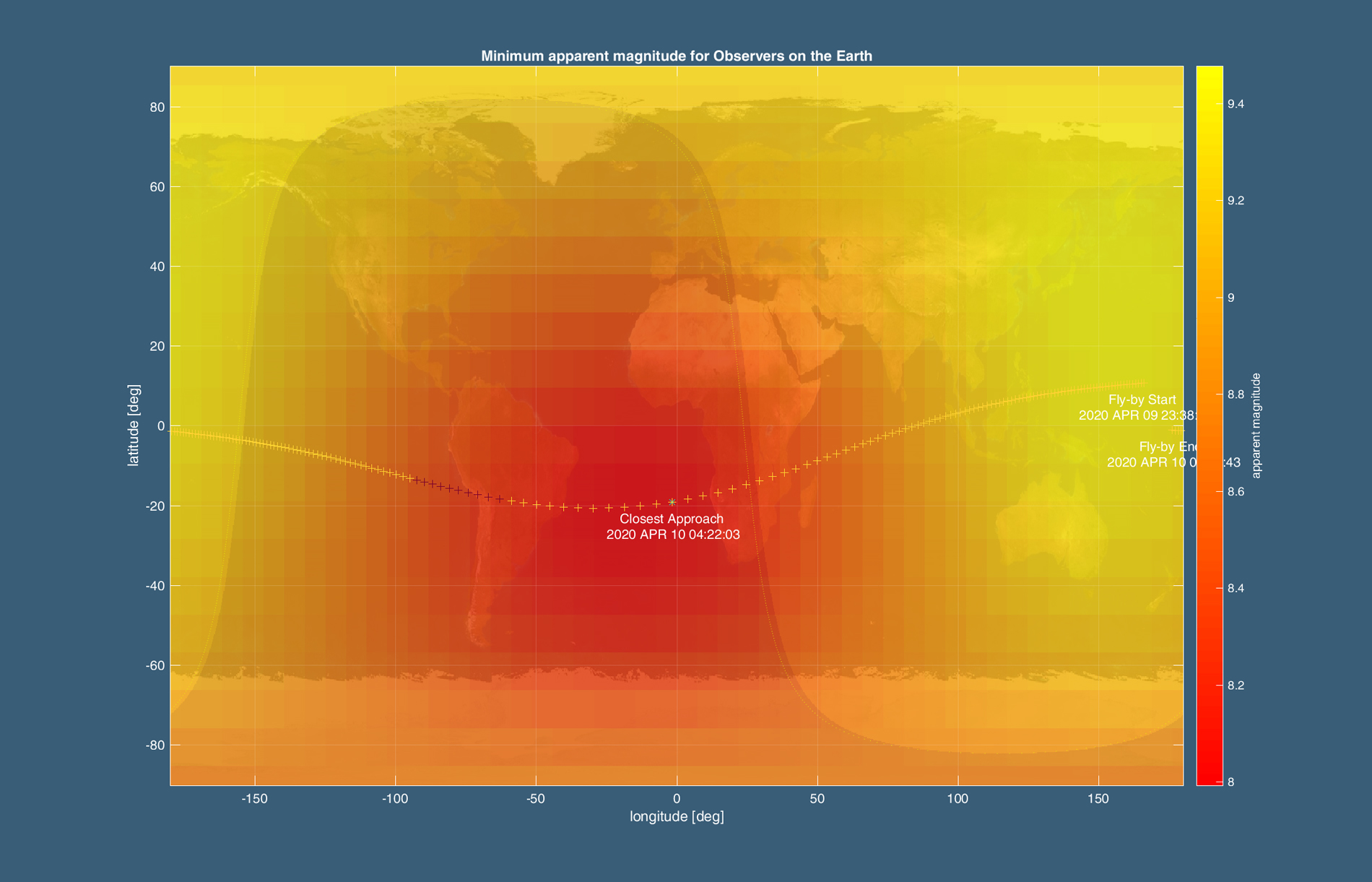A Mercury probe flies by Earth tonight. Here's how to hitch a VR ride (and maybe see it, too!)
The European-Japanese BepiColombo mission will whiz past our planet in the wee hours of Friday (April 10) as the spacecraft continues on its long journey toward Mercury.
This flyby of Earth will be the last opportunity for skywatchers to see BepiColombo before the probe continues its complicated path to Mercury. The trip requires nine planetary encounters with Earth, Venus and Mercury so that the spacecraft can lose speed before slipping into orbit at its final destination in 2025.
Luckily, even with most of us around the world stuck at home in "social distancing mode," spotting the spacecraft requires only luck and some modest astronomical equipment set up on your balcony or in your backyard. If you can't view the spacecraft in real life, you can still follow along with the mission on any internet-connected device, the European Space Agency said in a statement.
Related: BepiColombo in pictures: A Mercury mission by Europe and Japan
Here are the first selfies of #BepiColombo approaching Earth, taken earlier today, less than 200,000 km away, ahead of the flyby tomorrow. At closest approach, scheduled on 10 April 05:25 BST/06:25 CEST, the spacecraft will be only 12,700 km away #StayTuned #BepiColomboEarthFlyby https://t.co/EG0Grsh2jAApril 9, 2020
When BepiColombo briefly returns to Earth, it will zoom overhead at an altitude of just 7,900 miles (12,700 kilometers) — or about 30 times the altitude of the International Space Station.
Visibility will be best in the southern hemisphere, but southern parts of the United States (such as around the NASA centers near Orlando or Houston) may be able to see the spacecraft briefly. To determine whether you may be able to see the flyby, you can input your location's latitude and longitude (which you can find here) into this Italian BepiColombo outreach website.
Once you know if BepiColombo will pass over your head, check the weather to make sure clouds won't get in the way, set your alarm if you need to take a nap first and make sure to set aside a pair of binoculars or a small telescope to see it. The spacecraft will make its closest approach on April 10 at 12:25 a.m. EDT (0524 GMT), reaching a brightness of magnitude 8 — a little fainter than typical naked-eye visibility (magnitude 6).
Breaking space news, the latest updates on rocket launches, skywatching events and more!
Magnitude is the reverse scale used by astronomers to measure the brightness of sky objects. The lower the number, the brighter the object, with negative numbers denoting especially bright objects.
If you do spot the spacecraft, you can share your pictures with others to qualify for a contest to win a BepiColombo scale model and be published on the ESA website; check this contest page for full guidelines.
VR ride with BepiColombo
If you're out of luck and you won't be able to see the spacecraft from where you are, there are lots of ways to follow online, including tracking the probe in virtual reality.
ESA created a VR simulation of BepiColombo's path past Earth, which you can download here. The simulation shows the field of view of two of the mission's science instruments, as well as two of the "selfie" cameras.
ESA recommends you use a "Google Cardboard-style" virtual reality viewer wrapped around your phone for the best results. (If you don't have a Google Cardboard on hand, you can make your own based on these instructions.)
The Twitter accounts @BepiColombo, @esaoperations and @esascience will all provide live updates, and separate accounts for the individual spacecraft making up BepiColombo will offer "extra content and a unique take," ESA said about the accounts @ESA_Bepi, @JAXA_MMO and @ESA_MTM. You can also follow BepiColombo's progress virtually on the Heavens Above website.
For a general (not real-time) overview of the mission's progress, you can also use the interactive "Where is Bepi" tool on the ESA website to figure out where the spacecraft will be on each day of its mission, including planetary flyby times.
- Photos of Mercury from NASA's Messenger spacecraft
- Best night sky events of April 2020 (stargazing maps)
- See amazing photos of Mercury by a doomed NASA spacecraft (video)
Follow Elizabeth Howell on Twitter @howellspace. Follow us on Twitter @Spacedotcom and on Facebook.
OFFER: Save 45% on 'All About Space' 'How it Works' and 'All About History'!
For a limited time, you can take out a digital subscription to any of our best-selling science magazines for just $2.38 per month, or 45% off the standard price for the first three months.

Elizabeth Howell (she/her), Ph.D., was a staff writer in the spaceflight channel between 2022 and 2024 specializing in Canadian space news. She was contributing writer for Space.com for 10 years from 2012 to 2024. Elizabeth's reporting includes multiple exclusives with the White House, leading world coverage about a lost-and-found space tomato on the International Space Station, witnessing five human spaceflight launches on two continents, flying parabolic, working inside a spacesuit, and participating in a simulated Mars mission. Her latest book, "Why Am I Taller?" (ECW Press, 2022) is co-written with astronaut Dave Williams.



